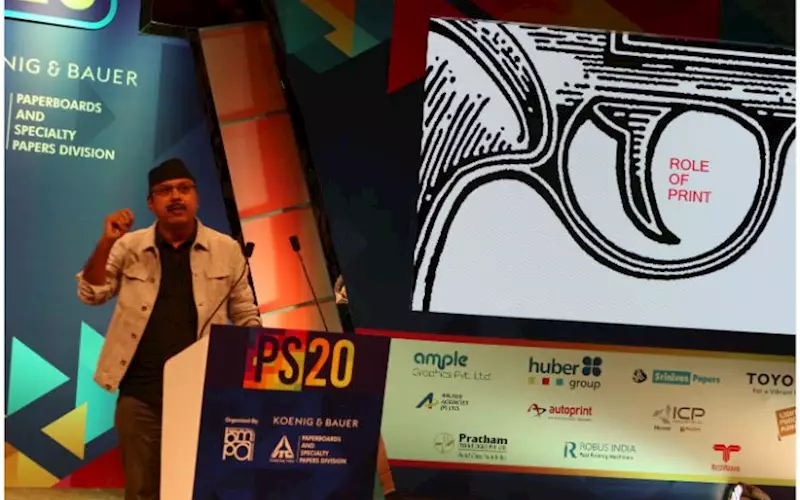Print Summit 2020: Print has power, just like the gun, says Josy Paul
Josy Paul, CEO of BBDO, kicked off the 14th edition of Print Summit at the NCPA on 23 January. The day-long conference was packed with high-powered presentations, where over 900 delegates from various walks of the Indian print industry participated.
23 Jan 2020 | By Noel D'Cunha
The advertising guru said, “If communication is theatre, print is the first act.”
Showing the image of a gun to define the role of print, Paul said, it’s not about the power of print. The moment you understand the role of print, it becomes powerful.”
The trigger of the gun has power, and for the work that Paul does, this power is everything. “A campaign cannot start without that trigger. It’s the trigger that sets fire to an idea, where the brand action begins. It’s one that sets fire to the minds of human beings who are receiving it,” he said.
Paul shared examples of the power of print — love letter which starts a relationship, a wedding card that seals a commitment, a poster which protesters use to start a revolution. “An image can start or end a war,” he said.
Paul shared few examples where print played a huge role in mobilising people into action, including the Burger King ad in the front page of the biggest newspapers in the world, where it invited McDonald to end the ‘burger-war’ on Peace Day, 21 September, an annual day of global unity. The deal was: forming a new, solid product, McWhooper, a combination of tastiest bits of Big Mac and Whooper. “McDonald's and Burger King were always at each other. It's like Coke and Pepsi. What happened between the two was a light hearted war,” said Paul.
But McDonald’s said, no, and that was a trigger for Burger King’s success. It sold truckloads of burgers and promoted world peace on the side. According to reports, the campaign generated 8.9-billion global impressions, trended worldwide and created USD 220-m in earned media for Burger King.
Paul also spoke about a poster which had 45 ads made headlines, and how on 16 April 2000, for the first time in the history of the world, he designed a front page of The Times of India, which was blank, with just a few words printed. On the next page was the ad of Indya.com. “The ad did create a buzz — both for and against. But what it did was to start a trend of selling first page ads in newspaper,” said Paul.
On a personal note, the ad also made Paul popular, so much so that he received job offers which were ten times his salary. “It was a trigger for me to start two agencies — David and BBDO,” he said.
Paul also shared how Nike used print ads with the tagline Just do it, and an image to send a social message. It created a buzz, and stocks of Nike, which was falling, sharply rose. “An image can change the world. a line can change the world. And when an image and a line come together in a simple post, it can start a revolution,” he said.
Paul concluded by saying: “If you believe in something, say it with print; if you want to start a conversation, say it in print, if you want to start a revolution, say it in print.”














 See All
See All